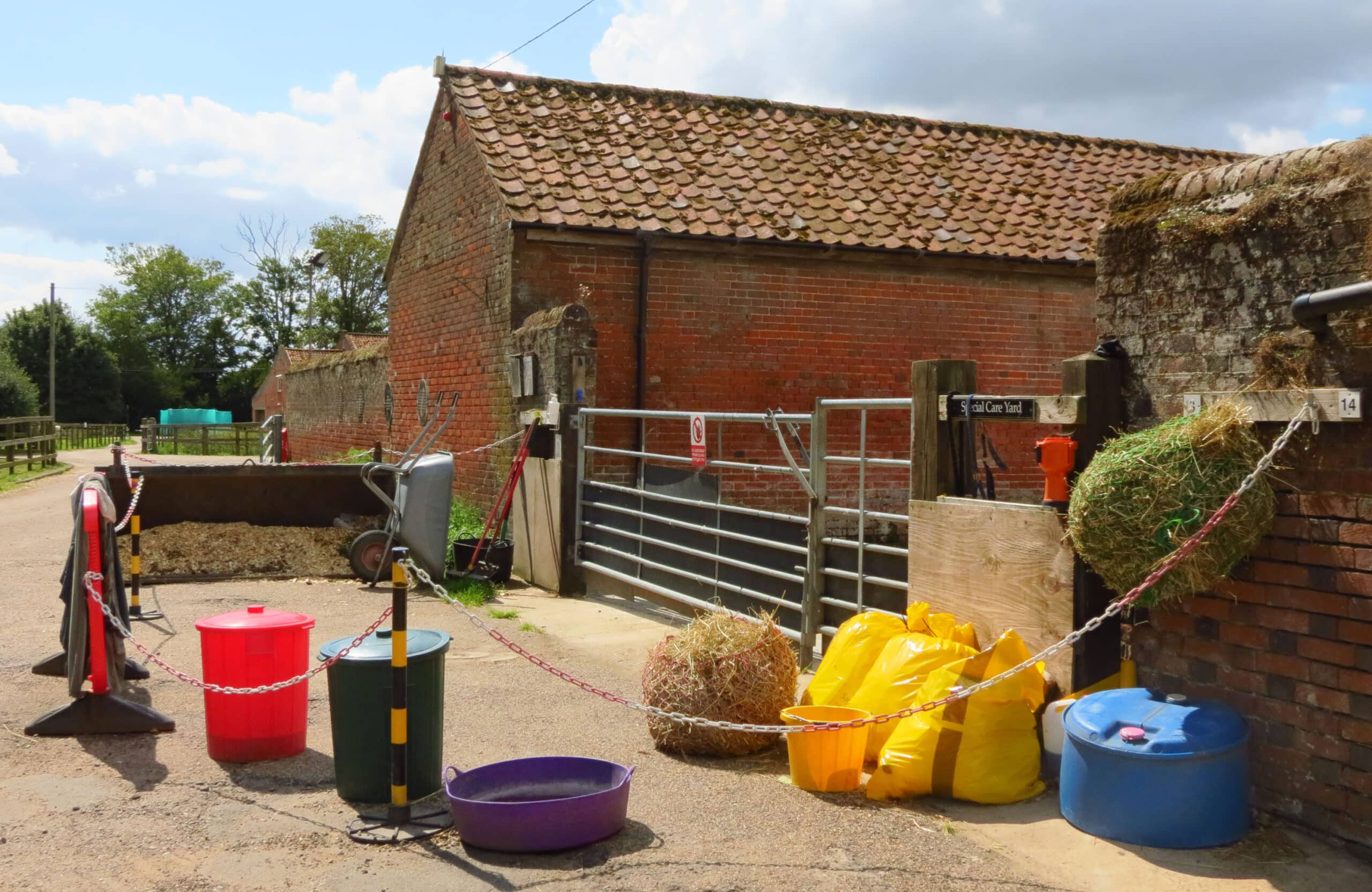Diseases & Conditions, Strangles
What is the best way to manage an equine strangles outbreak?
Helen Whitelegg of Redwings concludes her series on strangles and how to manage an outbreak if it enters your yard
Strangles can happen on any yard; Streptococcus equi (S. equi) bacteria really don’t discriminate. We know that good biosecurity practices can significantly reduce the risk of infection, but it cannot be eliminated altogether. No one chooses strangles and, no one should be judged for having an infected horse but, we can choose how to manage an outbreak, and those choices make a big difference.
Act early
Don’t wait for a confirmed diagnosis before taking steps to contain a potential outbreak. As soon as strangles is suspected, take precautions by putting quarantine measures in place, stopping horse movements on and off site and, contacting your vet. Restrictions can easily be lifted again if test results are negative but, it is much harder to get on top of an outbreak that has had a head start.
When strangles has been confirmed, work with your vet on a specific outbreak management plan. This will need to be tailored to the individual circumstances however, there are key principles to apply in any scenario.

Make quarantine work for you
Strangles spreads through contact, not on the air, so a well set-up quarantine system is effective at containing disease within a relatively small area. Bacteria can only be transmitted as far as the horse can cough or snort infective material, meaning 2-3 metres should be an adequate margin. An airborne disease such as equine flu is much more challenging to control.
Quarantine during an outbreak is best approached using the traffic light system. Work with your vet to establish separate zones for horses according to their infection status:
- Red Zone – strict quarantine for horses with active symptoms or a positive test result
- Amber Zone – strict quarantine for monitoring horses who may have been in contact with an infected horse (remember it can take up to 21 days for a horse to incubate the disease)
- Green Zone – for horses not believed to have been at risk of exposure but who are still monitored carefully
It is often advisable to establish your Red Zone for sick horses, then place the rest of the yard in amber quarantine, at least initially. Decide with your vet to determine if any horses can be allocated to a Green Zone early on, or whether a reen Zone will only be set up as horses test negative for the disease as the outbreak progresses.
Track and trace
It can take up to 21 days for a horse to incubate strangles, so it is important to review all an infected horse’s in-contacts for the three weeks before they became ill. This should not only include direct contact with other horses, but any people who have handled the horse and places the horse may have been such as a vehicle, event or alternative accommodation. Be methodical and prompt about getting in touch directly with everyone who needs to be aware that their horse may have been exposed to S. equi.

Communication
An infectious disease outbreak can cause strong and varied reactions, including anxiety, frustration and dismissiveness. It is critical to try to communicate calmly and consistently, to help manage emotions and expectations and, keep everyone working together.
- Top tips for yard communications during an outbreak include:
- On shared yards, ask the vet to chair a meeting where everyone is given the same information and can ask questions
- Provide or ask for a written summary of agreed biosecurity procedures for everyone to use
- Use a digital group chat such as WhatsApp to help everyone stay in touch and informed
- Try to stay positive, encouraging and supportive and help others to do the same
It is also important to be open about an outbreak within the local area. This helps other equestrians to understand the situation on your yard, and increase their own biosecurity as needed. Social media can be useful to help get the word out rapidly and post updates as you wish. The vast majority of people will be grateful for being made aware of an outbreak and respond positively. If there is any negativity, avoid being drawn into unhelpful dialogue and feel free to delete or disable comments.
The end of an outbreak
Strangles is an unpredictable disease, and an outbreak can last weeks or months. It is invariably a tiring, anxious time for everyone involved but, it is essential to keep biosecurity standards consistent for as long as necessary.
As infected horses recover, it can be tempting to ease restrictions. However, horses can remain infectious for several weeks after signs of ill health have disappeared. The only way to be certain that each horse is no longer able to spread disease is for them to achieve a negative test result on guttural pouch endoscopy before being released from quarantine. This process will also ensure that horses at risk of becoming strangles carriers are identified and treated. Preventing horses from becoming carriers is one of the most important steps we can take to help reduce the consistent prevalence of the disease. If you are unsure of the source of infection, it is important to consider whether an existing strangles carrier could have shed bacteria and triggered the outbreak.
Carriers are not likely to become sick themselves, and one could be a long-standing, otherwise completely healthy resident. Only testing will determine whether a horse is a carrier but, once identified carriers can be treated and pose no further risk to other horses.
Once all horses have the all-clear, it is important to take time to clean and disinfect every area where infected horses were cared for. Strangles does not survive in the environment for as long as was once thought, but in cool, damp conditions, bacteria can remain viable for several weeks.
Reflect and review
People who go through a strangles outbreak are usually determined to avoid repeating the experience. An outbreak can present a good opportunity to review routine biosecurity practices, revise or implement quarantine and screening protocols for new horses and, to improve awareness of risks when mixing with other horses at events.
Be prepared
Strangles often seems to appear out of nowhere but, having certain policies and resources in place on your yard can help you respond effectively if infectious disease is suspected or confirmed:
- Keep a yard diary or similar where all visitors and horse movements are recorded
- Keep suitable disinfectant, signage and other items ready to set up a quarantine area at short notice If you manage a yard, include biosecurity procedures in your yard agreement and, consider developing an outbreak management plan for everyone to be aware of and to have access to, if needed
- Check horses’ resting temperatures regularly so they are used to the procedure, you know what their normal range is and you can spot fever at the earliest opportunity
- Set up a WhatsApp group or similar on a shared yard so people are used to keeping in touch and sharing information
- Take Redwings’ Stamp Out Strangles pledge to help you keep up to date with the latest research and guidance, and show your commitment to protecting horses from the disease
A range of practical ideas and resources to help with strangles outbreak management are available to download and share for free through Redwings’ strangles outbreak blog – https://www.redwings.org.uk/news-and-views/strangles-resources
